 Food is the 3rd largest household expense (Bureau of Labor Statistics). And everyone looking to eat healthy thinks that it costs a lot to do so. Here are some essential tips on overcoming the money obstacle of healthy eating:
Food is the 3rd largest household expense (Bureau of Labor Statistics). And everyone looking to eat healthy thinks that it costs a lot to do so. Here are some essential tips on overcoming the money obstacle of healthy eating:
Planning is the key to success. Plan meals by shopping the ads first, by looking at the deals before you make a shopping list rather than the opposite. Stock up on sales items for the deep freezer or basement pantry.
Take inventory before you start. Keep a list of what you need so you are less likely to overbuy or create waste.
Cook from your pantry and refrigerator first! Americans waste about 25% of the foods we buy. See what you have on hand and search Pinterest or SuperCook for ideas to use those items first.
Shop from a list to avoid impulse buys or things you might not actually use.
Do your homework! On the items you purchase regularly, know which stores carry it at the best price. I shop at three stores most weeks. I have a list of my staples and where the best price is at each store. When I shop the ads, I add sale items to my staples list for each store. Not sure who is least expensive? Take a day to explore or look it up online.
Research coupons. Most coupons are digital now; check out store apps or sites like:
 RedPlum.com
RedPlum.com- Smart Source
- Coupons.com
- RetailMeNot
- The Coupon Mom
- Ibotta
- Saving Star
- SnipSnap
- Grocery Smarts
- Checkout51
Take pictures of your receipts to take advantage of rebates from some sites.
Use coupons when items are on sale.
Know what is a “great price” and stock up. Ads can be tricky. Chicken breasts can vary from $1.29/lb to $6.49/lb in our town. When a good sale hits, I overbuy and freeze, so I always have chicken at the best price. Keep a spreadsheet of price by store.
Be wary of the ads. It is not uncommon for the stores to make a terrible deal seem great. If a can of chilis is typically $0.79/can, a 10 for $10.00 can seems attractive, but actually costs considerably more.
Know the ten-week rule. Stores run specials on an 8-12 week cycle. If you have the room and you know you will use it, consider buying what you will likely use in the next ten weeks while it is on sale to avoid paying full price.
Get a rain check when the store sells out. Most stores will give you a rain check if you ask. A rain check allows you to purchase the item at the sale price even after the sale ends.
Consider alternatives. If a recipe calls for ground beef, consider swapping out for ground turkey or chicken if it is more cost-effective. If an ingredient is too expensive that week such as asparagus, consider swapping it for another family favorite. Most recipes are pretty flexible, and a few swaps can add up.
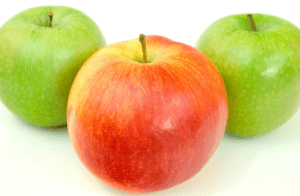 Compare apples to apples. Look at the actual weight on a packaged item. Two of the same item may cost $2.00, but if one weighs 12 oz and one weighs 16 oz, the 16 oz is clearly the better deal. Packaging can be deceptive.
Compare apples to apples. Look at the actual weight on a packaged item. Two of the same item may cost $2.00, but if one weighs 12 oz and one weighs 16 oz, the 16 oz is clearly the better deal. Packaging can be deceptive.
Don’t go to the grocery store hungry. Your mama was right! Gum or mints can help in a pinch!
Go alone and only shop the aisles on your list; this reduces impulse purchases. Studies show about 65% of items in your baskets are impulse buys when we shop in a group! People that shop every aisle alone or otherwise end up with 68% of their items being unplanned.
Go high or go low. Middle shelves and end caps usually carry more expensive brands and less real deals. As a result, you’re spending more than if you look high or low.
Cut the cart! A bigger cart can cause you to purchase 40% more. Use a smaller cart if possible.
Check yourself. Impulse purchases drop by 32% for women and 17% for men just by using self-checkout! Because the lines are usually shorter, there is less tempting merchandise.
Buy in season. Produce can cost 30-50% less in season, and many fruits and veggies can be frozen for future use.
Fish for the best price. Frozen fish is often up to 35-40% less expensive than what is being sold at the counter. And if you look closely, the fish at the counter are frequently previously frozen anyway.
Slice & dice at home. Pre-sliced or diced items almost always cost more. Nonetheless, while it takes more time, you can save considerable money. Save the ends and peels of your veggies and bones from meat to make a delicious broth and save even more. We’ll show you how!
Split with a friend. Buy bulk meats or sale items and split them with family or friends if you don’t have room to freeze them.
Looking for great anti-inflammatory recipes so you can put your new tips to work? Try these to get you started.
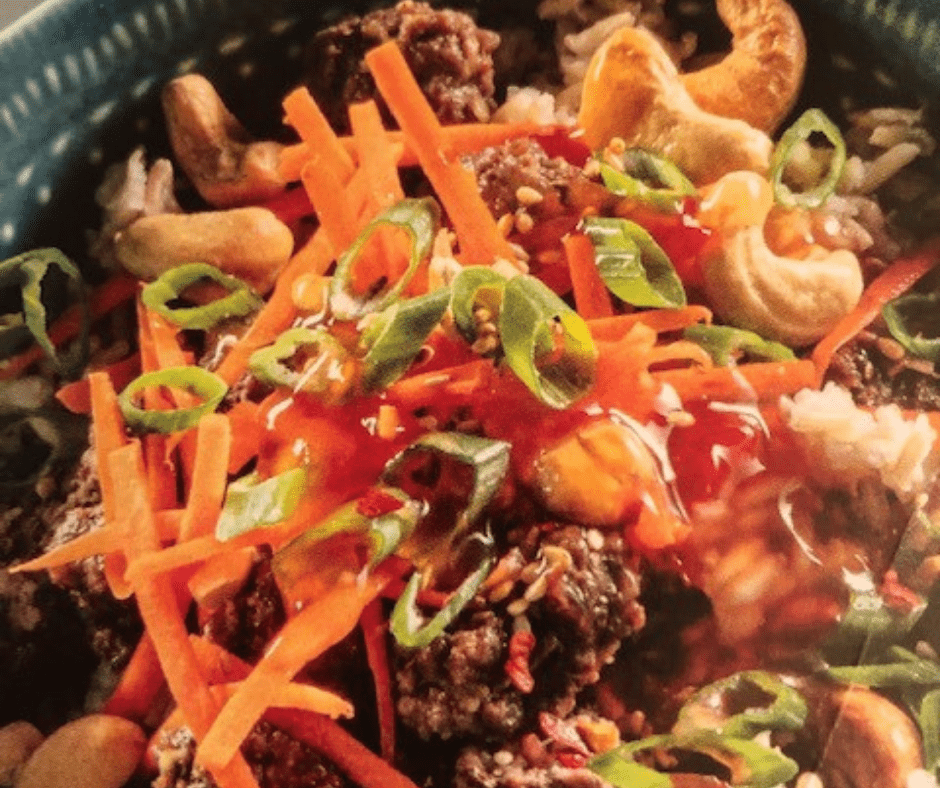
Korean Beef and Rice Bowl
Ingredients
- 1 lb lean ground beef
- 1 Tbsp Bragg Liquid Aminos coconut aminos or tamari soy sauce
- 1 Tbsp honey
- 1 Tbsp ginger minced
- 1 tsp sesame oil
- 1-2 Tbsp olive oil
- 1 tsp sriracha or to taste
- 4 cups cauliflower rice
- 1 cup shredded carrots
- 4 Tbsp chili sauce no added sugar (or see recipe below)
- ¼ cup cashews optional
- 4 green onions sliced
- 2 tsp toasted sesame seeds
Instructions
- Add ground beef to a medium skillet and cook over medium heat, breaking up meat with a spoon, until browned, about 8 minutes.
- Drain fat from beef and return to stovetop. Stir in Bragg Liquid Aminos, honey, ginger, sesame oil and sriracha. Cook until warmed through, 2-3 minutes.
- In a separate skillet, heat olive oil over medium heat. Add cauliflower rice and cook until heated through.
- Divide cauliflower rice among four bowls. Evenly top each bowl with beef mixture and remaining ingredients. Serve immediately.
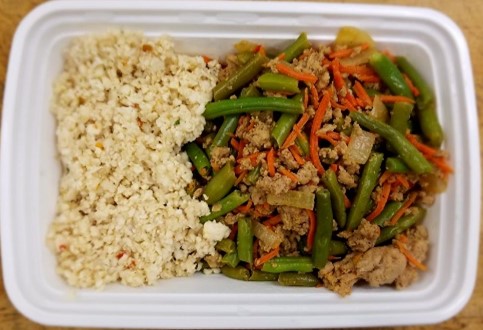
Asian Seasoned Turkey
Ingredients
Turkey
- 1 ½ lbs ground turkey
- ¼ lb onion
- 1 lb green beans trimmed and cut in half
- ¼ lb shredded carrots
- 2 Tbsp minced garlic
- 2 Tbsp Bragg Liquid Aminos
- 2 Tbsp sesame oil
- 2 Tbsp rice vinegar
- 2 Tbsp honey
- ⅛ tsp 5-spice
- 2 Tbsp chili sauce no sugar added or see recipe below
- 1 tsp ground ginger
- ¼ Tbsp salt
- ¼ Tbsp pepper
- Sriracha sauce for topping if desired
Cauliflower
- 1 lb riced cauliflower
- ¼ Tbsp garlic minced
- 2 Tbsp Bragg Liquid Aminos
- ¼ Tbsp sesame oil
- 2 Tbsp rice vinegar
- ⅛ tsp 5-spice
- 2 Tbsp chili sauce no sugar added or see recipe above
- ⅓ tsp ground ginger
- ⅓ tsp salt
- ¼ tsp pepper
Instructions
Turkey Instructions
- In a large bowl, combine all ingredients except turkey, onion, green beans and carrots.
- Add turkey to the bowl, combining until mixture is well incorporated into the turkey. Marinate in the refrigerator for 1-2 hours.
- In a large skillet, add turkey with marinade, onions, green beans and carrots. Cook over medium heat until turkey is cooked through and vegetables are softened.
Cauliflower Instructions
- In a medium skillet combine all ingredients into cauliflower and cook over medium heat until cauliflower is heated through and flavors have combined.
- Divide onto 4 plates with turkey and vegetables. Drizzle with sriracha sauce if desired.
Notes
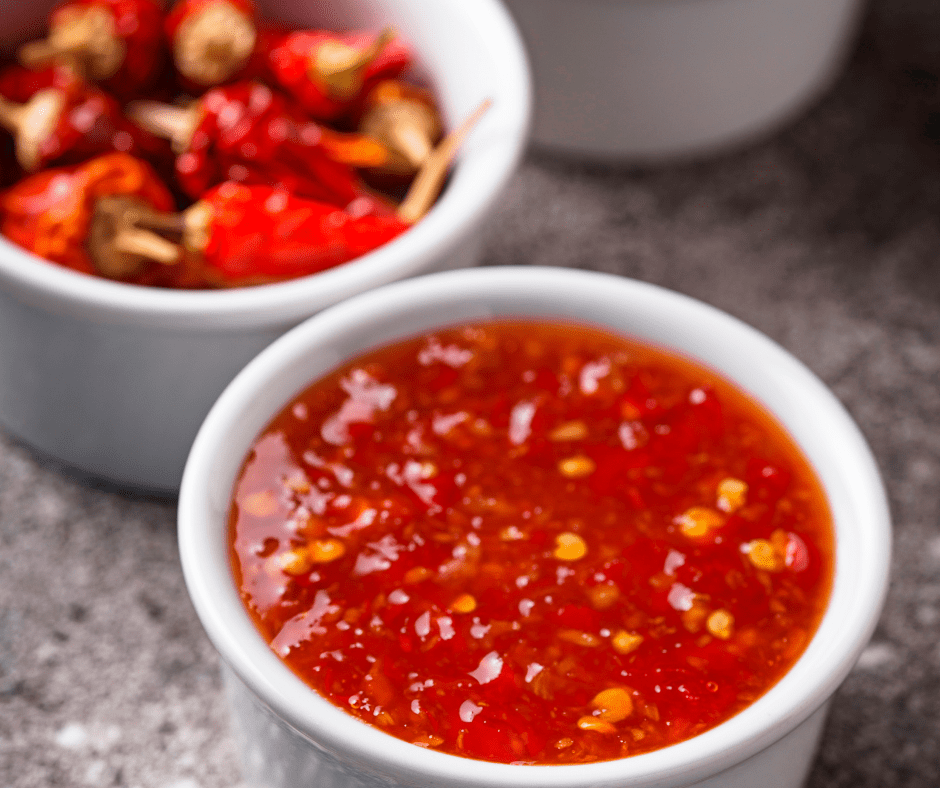
Homemade Chili Sauce
Ingredients
- 18 oz tomato sauce
- 2 Tbsp tomato paste
- 2 Tbsp white or apple cider vinegar
- 2 Tbsp coconut palm sugar
- ½ tsp chili or ancho chili powder
- ⅛ tsp cinnamon
- 1 tsp red pepper flakes or to taste
- 1 tsp Tabasco pepper sauce or to taste
- Pinch each ground cloves and allspice
Instructions
- Mix all ingredient in a medium bowl, until fully combined.
- Transfer to a jar or air tight container and store in the refrigerator for up to 1 month.
Notes
- Flavors will develop as the chili sauce sits so make a few hours or a day in advance if possible.
- If you would prefer your chili sauce a little less sweet, start by adding 1 Tbsp of coconut palm sugar and taste after the remaining ingredients have been mixed in. Add the additional sugar as desired.
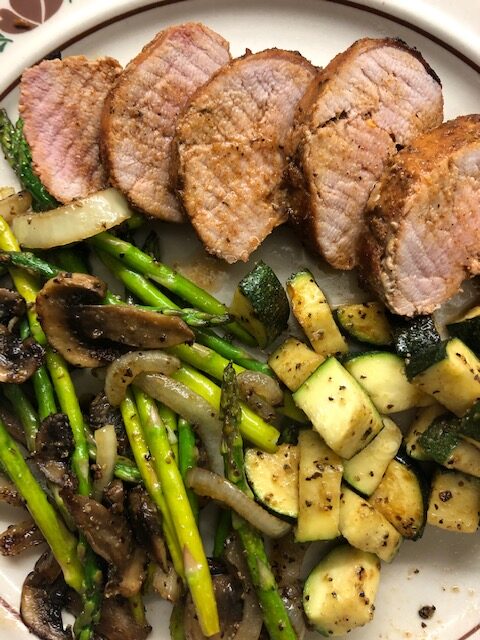
Dry-Rubbed Pork Tenderloin
Equipment
- Oven or Air Fryer
Ingredients
Pork and Dry Rub Ingredients
- 1 lb pork tenderloin
- 3 Tbsp coconut palm sugar
- 1 tbsp smoked paprika
- 1 ½ tsp salt
- 1 tsp ground mustard
- 1 tsp onion powder
- 1 tsp ground black pepper
- ½ tsp garlic powder
- ½ tsp cayenne pepper or to taste
- ½ Tbsp olive oil
- 3 strips bacon
Vegetables
- ½ onion peeled and sliced
- 6 mushrooms sliced
- ½ lb asparagus trimmed
- 1 medium zucchini cubed
- Salt, pepper and garlic powder to taste
- Olive oil to drizzle
Instructions
- Mix sugar and all dry rub seasonings in a bowl until well combined.
- Coat pork with olive oil and rub spice mixture on entire tenderloin. Wrap tenderloin with bacon strips.
- Add onion, mushrooms and asparagus to a skillet. Sprinkle with seasonings and drizzle with olive oil. Set aside on stove top.
- Preheat air fryer to 400°F. Carefully place pork tenderloin into air fryer and set for 9 minutes.
- Remove pork, carefully turn over and set air fryer for an additional 5 minutes.
- Once timer goes off, add zucchini to the basket, sprinkle with seasonings and drizzle with olive oil. Set air fryer for another 4 minutes.
- Saute vegetables over medium heat and cook while the air fryer finishes, until vegetables are to your liking.
- Once the air fryer timer goes off, remove pork to a cutting board and let rest for 5 minutes before slicing. Save any juices to serve over sliced meat. Internal temperature should reach 145-160°F.
- Slice pork tenderloin and serve with vegetable sides.
Notes
- If cooking in the oven, use same instructions but cook pork tenderloin at 350°F for 35-40 minutes (or until temperature reaches 145-160°F).
- All vegetables can be roasted, about 7-10 minutes or until cooked to your liking.
#SaveMoney #MoneyObstacle #PlanAhead #BuyInSeason #EatHealthy
If you’re interested in an anti-inflammatory lifestyle and more information like this, check out The Official Anti-Inflammatory Diet Masterclass. Or email us at info@vitalityconsultantsllc.com for more details.







